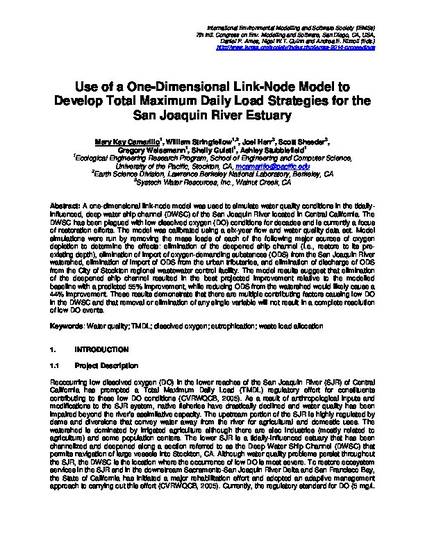
A one-dimensional link-node model was used to simulate water quality conditions in the tidallyinfluenced, deep water ship channel (DWSC) of the San Joaquin River located in Central California. The DWSC has been plagued with low dissolved oxygen (DO) conditions for decades and is currently a focus of restoration efforts. The model was calibrated using a six-year flow and water quality data set. Model simulations were run by removing the mass loads of each of the following major sources of oxygen depletion to determine the effects: elimination of the deepened ship channel (i.e., restore to its preexisting depth), elimination of import of oxygen-demanding substances (ODS) from the San Joaquin River watershed, elimination of import of ODS from the urban tributaries, and elimination of discharge of ODS from the City of Stockton regional wastewater control facility. The model results suggest that elimination of the deepened ship channel resulted in the best projected improvement relative to the modelled baseline with a predicted 55% improvement, while reducing ODS from the watershed would likely cause a 44% improvement. These results demonstrate that there are multiple contributing factors causing low DO in the DWSC and that removal or elimination of any single variable will not result in a complete resolution of low DO events.
Available at: http://works.bepress.com/shelly-gulati/39/
